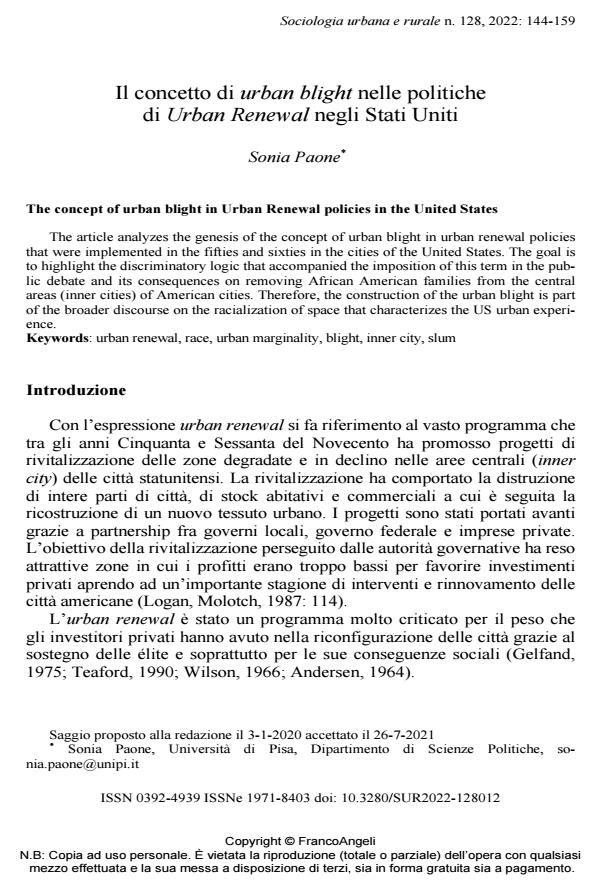The concept of urban blight in Urban Renewal policies in the United States
Journal title SOCIOLOGIA URBANA E RURALE
Author/s Sonia Paone
Publishing Year 2022 Issue 2022/128
Language Italian Pages 15 P. 144-158 File size 202 KB
DOI 10.3280/SUR2022-128012
DOI is like a bar code for intellectual property: to have more infomation
click here
Below, you can see the article first page
If you want to buy this article in PDF format, you can do it, following the instructions to buy download credits

FrancoAngeli is member of Publishers International Linking Association, Inc (PILA), a not-for-profit association which run the CrossRef service enabling links to and from online scholarly content.
The article analyzes the genesis of the concept of urban blight in urban renewal policies that were implemented in the fifties and sixties in the cities of the United States. The goal is to highlight the discriminatory logic that accompanied the imposition of this term in the public debate and its consequences on removing African American families from the central areas (inner cities) of American cities. Therefore, the construction of the urban blight is part of the broader discourse on the racialization of space that characterizes the US urban experience.
Keywords: urban renewal, race, urban marginality, blight, inner city, slum
Sonia Paone, Il concetto di urban blight nelle politiche di Urban Renewal negli Stati Uniti in "SOCIOLOGIA URBANA E RURALE" 128/2022, pp 144-158, DOI: 10.3280/SUR2022-128012